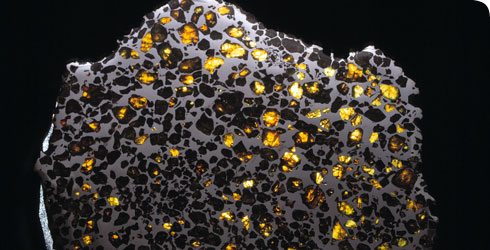Meteorites
The study of meteorites can reveal how the solar system first began, what life is like on other planets and how these planets were formed. Find out how often these messengers from space fall, where they end up and what other secrets they tell us.
-

What is a meteorite?
Find out where meteorites come from and where they can be found in this short introduction.
-

Meteorite FAQs
Why do meteorites fall from the sky? Has anyone been killed by a meteorite? Find out the answers as well as how to contact us if you have a meteorite enquiry.
-

Meteor impacts
How often do meteors strike Earth, where are they most likely to hit, and is there any warning?
-

Types of meteorite
There are three main groups of meteorite. They differ in the amount of iron-nickel metal they contain.
-

Collecting and identifying meteorites
Very few people actually see meteorites hit the ground and most fall into the sea and are lost. So where are the best places to spot them?
-

360° views of meteorite specimens
The Museum has a collection of over 2,000 meteorites. Rotate our virtual specimens and take a 360 degree look.
-

Meteorites and diamonds
Diamonds in meteorites are produced in two different ways, from two different sets of material.
-

Studying meteorites
Many of the conditions that create meteorites are not like anything on Earth. Discover the fascinating yet difficult field of meteoritics, the study of meteorites.
-

Catalogue of Meteorites
Search the Catalogue of Meteorites, the world taxonomic database of meteorite falls and finds.
-

Meteorites from the Moon and Mars
Although almost all meteorites come from the asteroid belt, a few have come from the Moon and Mars.
-

Martian meteorites
Over 30 meteorites have come from Mars. Find out how studying their mineralogy and geochemistry tells us about the Red Planet.
-

Meteorites: the search for the origins of life
Meteorite expert Monica Grady discusses where meteorites come from and what they can tell us about the Earth's beginnings.
-

Collecting meteorites in Antarctica
Interview with Sara Russell, Head of the Mineral and Planetary Sciences Division. Sara has spent three summers collecting meteorites in Antarctica. Find out what is involved.
Toolbox
Meteorites group blog
-
[an error occurred while processing this directive]
